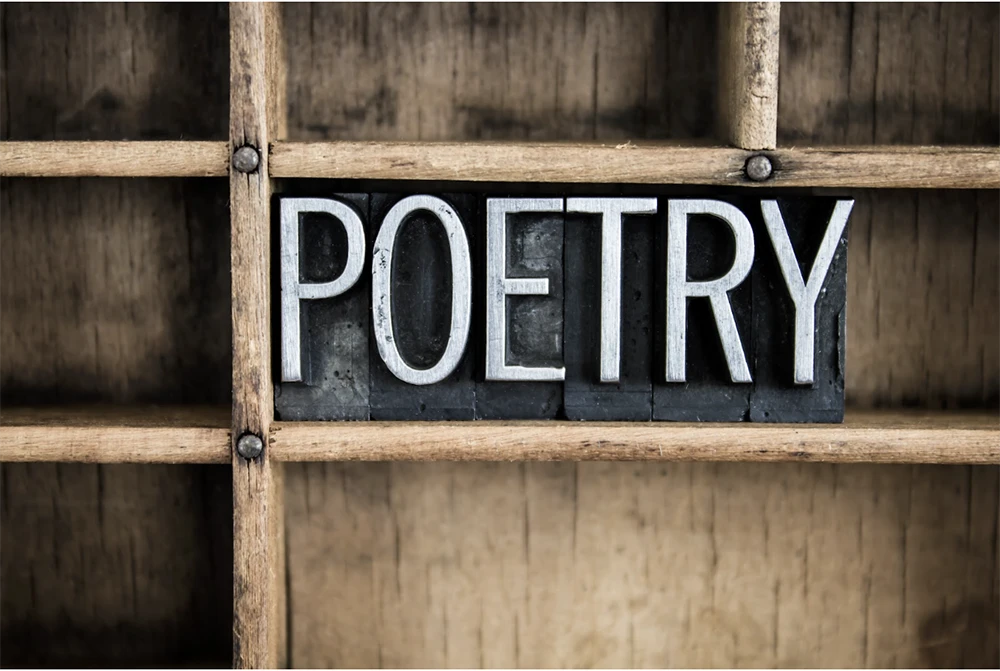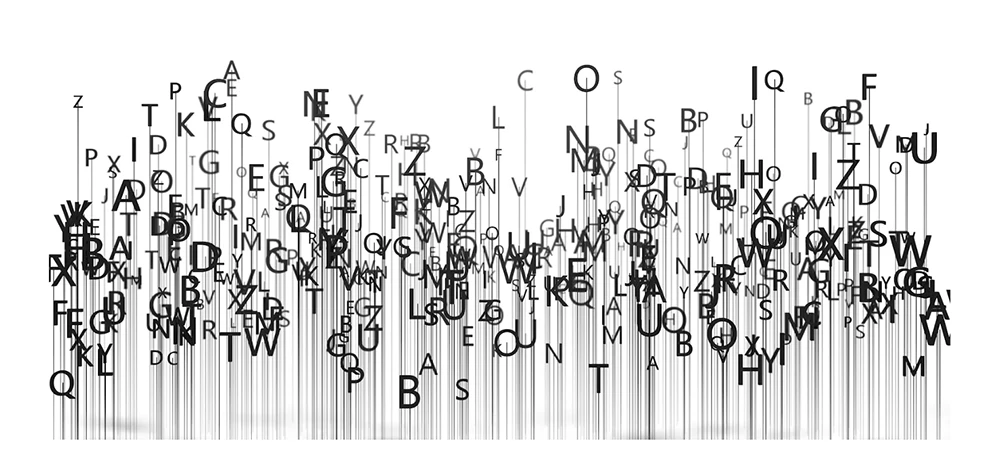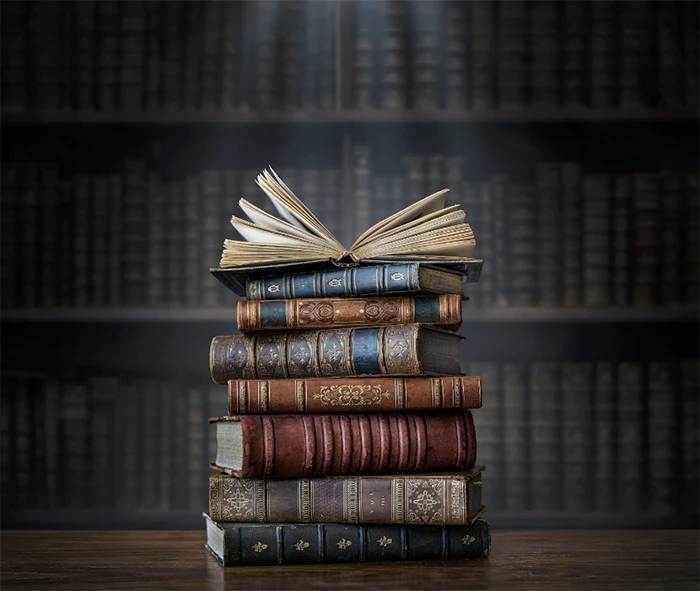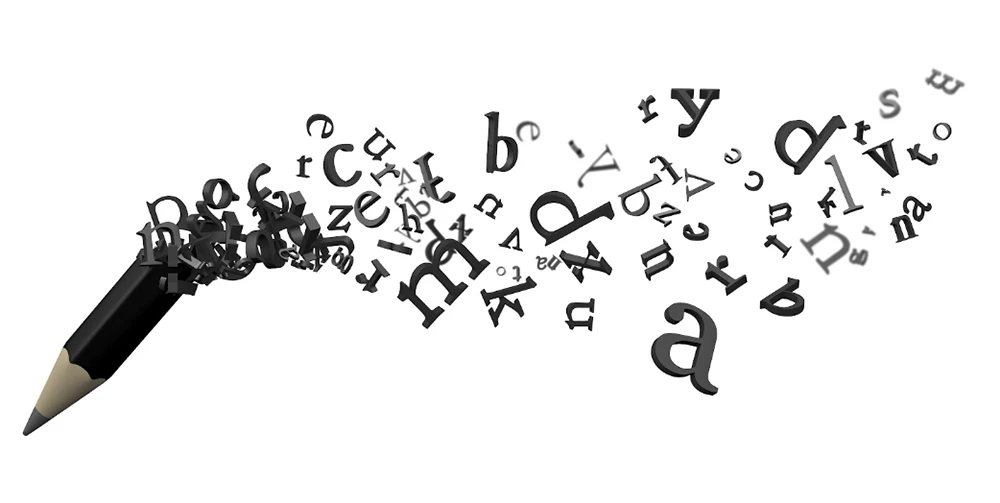I THINK THAT I SHALL NEVER SEE
Using and Analyzing Poetry in the Classroom
Introduction | Background Knowledge | Activities | Extensions | Standards

Introduction
Poetry
Poetry is a word
Poetry is a prayer
Poetry is a dream
It is a voice
A whisper
A song
A rhyme
A verse
A story
A poem
A feeling
A memory
A thought
A word
Created with Poem Generator from A Poem of Quotes

Background Knowledge
Poetry is a literary form that is characterized by emotion and expression. Words in poems are specifically chosen and intentionally arranged. The sounds and beauty of the words are just as important as the meaning. Poems are often organized into groups of lines called stanzas. Many poems are written in a rhythm of words or syllables called meter. Some poems rhyme, but many do not.
The earliest poetry is believed to have been spoken. Ceremonial chants and songs began as societies developed.
Epic poems may be the oldest recorded poetry. The oldest recorded poem, "The Epic of Gilgamesh," was from Mesopotamia. Students still study epic poems from Ancient Greek and Roman poets like Homer and Virgil. These famous epic poems, "Iliad" and "Aeneid," tell the history of the world. Homer tells of the Trojan War, while Virgil explains how Rome was founded. These classics have influenced literature for thousands of years.
The poetry of the Medieval Period reflected the changes in the world at the time. Poems handled topics of war and change through ballads and rhyming couplets. Troubadours, or traveling poets, would go from town to town, entertaining the people with poems and songs. A famous poem from this time was "Beowulf," an epic poem written in Old English. It tells the story of a warrior who saves a kingdom from a monster named Grendel and his mother.
Sonnets came out of the Renaissance Era. The topics of poems shifted to mythology, love, and nature. The poetry of this time was written to be performed. William Shakespeare is one of the most famous sonnet poets of this era. Shakespeare's sonnets followed a format that became known as the "English sonnet." The format typically had 14 lines divided into three quatrains or four-line stanzas. The poems ended with a couplet or two rhyming lines. Lines 1 and 3 and 2 and 4 of each quatrain rhymed, giving the poem an abab cdcd efef gg rhyme scheme. Petrarch, a leader of Italian poetry, wrote sonnets in a different format, The "Italian sonnet" is also 14 lines but is divided into an octave and a sestet. The octave is eight lines written in iambic pentameter, where each line of poetry has ten syllables. Each syllable is an unstressed syllable followed by a stressed syllable as in the word "before." The sestet is six lines. The rhyme scheme can vary but is often cdecde.
The Neoclassical Era saw a return to ancient civilizations, primarily focusing on Greece and Rome. Instead of playing with meter and rhyme, poets reverted to classic forms such as odes and epic poems. Writers began branching out from traditional topics of love and nature to include politics and philosophy. John Dryden, the first Poet Laureate of England, was a famous Neoclassical poet. His first important work was a eulogy for English statesman Oliver Cromwell. In Colonial America, poets began to write political commentary about the Revolution and, in the case of enslaved poet Phillis Wheatly, slavery.
The Romantic Period saw a return to poems about emotion and nature. Poets wrote about everyday life. The poetic form was not the focus, and poets did not follow rules about form and rhyme. Famous English poets William Wordsworth and Samual Taylor Coleridge wrote "lyrical ballads," which focused on nature and the senses instead of strict form. In the new United States, poets also began to favor nature and description over form. Known as Transcendentalism in America, poets Henry David Thoreau and Ralph Waldo Emerson. Thoreau captured the essence of nature through his experiences at Walden Pond. Emerson also wrote about nature but is best known for his essay "Self-Reliance."
The Modern era of poetry came right on the heels of Transcendentalism. Modern poets did not focus on nature like their Romantic counterparts. Instead, the topics became more complicated and turned to human psychology and society. Walt Whitman is one of the most famous of the Modern poets. His work, Leaves of Grass, is a collection of poems that celebrates the wonder of nature and the human's role in it. He addressed society with his poem about Abraham Lincoln's death in "O Captain, My Captain."
As poetry has evolved through the 20th century and into the 21st, poetry has become less structured. Poems have become ways to provide commentary on social and political aspects of society as well as ways to record current events. 20th-century poets have been honored with the Nobel Prize. Poets began to address challenging topics surrounding personal experiences, such as mental health. Six poets addressed the nation as part of the Presidential Inauguration ceremonies, beginning with Robert Frost in 1961 and, most recently, Amanda Gorman in 2021.
Poetry can be used throughout the curriculum. Poems can enhance instruction in math, science, and social studies by introducing a new way to read about these topics. In the English/Language Arts block, poetry can be used for many of the same purposes as other texts. Students can read narrative poems and identify story elements such as character, setting, conflict, and resolution. Poems often have wonderful language to teach visualization, writer's craft, and vocabulary. For younger students, poetry is an excellent way to access elements of language, such as rhyme.

ACTIVITIES
- Selective List of Print Resources
-
The Random House Book of Poetry for Children by Jack Prelusky (ISBN 978-0394850108)
- This poetry anthology presents classic poetry for children with more modern selections.
-
Mirror, Mirror - A Book of Reverso Poems by Marilyn Singer (ISBN 978-0525479017)
- One of three books of reverso poems by this author (Follow, Follow, and Echo, Echo are the other two), Mirror, Mirror reimagines familiar fairy tales in verse. Readers enjoy the poem from the top to the bottom, then the story is presented in reverse, which changes the perspective.
-
Love That Dog by Sharon Creech (ISBN 978-0064409599)
- This short novel in verse tells the story of Jack, who hates poetry. He finds his voice when he starts to write about a dog.
-
The Crossover by Kwame Alexander (ISBN 978-0544935204)
- Twins, Josh and Jordan, love to play basketball. They learn about growing up on and off the court as they play.
-
Choose a great book from one of these curated lists:
- 13 Terrific Poetry Books For Kids from Everyday Reading
- 45 Best Poetry Books for Kids from Teaching Expertise
- 40 Essential Poetry Books from We Are Teachers
- 50 Best Poetry Books for Children from Imagination Soup
-
The Random House Book of Poetry for Children by Jack Prelusky (ISBN 978-0394850108)
- Selective List of Online Resources
-
Poetry by Heart (TeachersFirst review) is a collection of poems that students are encouraged to memorize and recite. The poems are grouped by age.
- Choose a poem with more than one voice. Pair students to read or recite the poem. Students can record animated videos of themselves reading or reciting their poems with Renderforest (TeachersFirst review).
-
Nursery Rhymes (TeachersFirst review) - Nursery rhymes make poetry accessible for the youngest learners. This site provides the lyrics and the history of various nursery rhymes.
- Students can animate a favorite nursery rhyme using Cloud Stop Motion (TeachersFirst review). Consider having students record themselves reading the nursery rhyme.
- Create a class book of students' favorite nursery rhymes, including student drawings and audio recordings, using BookCreator (TeachersFirst review).
-
Create a poem with Poem of Quotes' Poem Generator.
- Share poems by conducting a Poetry Cafe; find ideas on how to do this at this TeachersFirst blog.
- TeachersFirst has a curated list of poetry resources.
-
Poetry by Heart (TeachersFirst review) is a collection of poems that students are encouraged to memorize and recite. The poems are grouped by age.

EXTENSIONS
-
Classroom Poets
-
Extend content learning by writing poetry. Provide excellent models like these for social studies, science, and math, and then encourage students to create poems to show what they know.
- Have students record and share their poems on a weekly podcast. Castbox Creator Studio (TeachersFirst review) and Buzzsprout (TeachersFirst review) offer free, easy-to-use podcasting tools. Learn more about incorporating podcasts into any class by watching the archive of OK2Ask: Podcasting 101: Using Podcasts in the Classroom.
-
Extend content learning by writing poetry. Provide excellent models like these for social studies, science, and math, and then encourage students to create poems to show what they know.

CORRELATION TO STANDARDS
-
AASL National School Library Standards
- Inquire Shared Foundation, Think Domain - Learners display curiosity and initiative by: 1. Formulating questions about a personal interest or a curricular topic. 2. Recalling prior and background knowledge as context for new meaning.
- Inquire Shared Foundation, Share Domain - Learners adapt, communicate, and exchange learning products with others in a cycle that includes: 1. Interacting with content presented by others. 2. Providing constructive feedback. 3. Acting on feedback to improve. 4. Sharing products with an authentic audience.
- Include Shared Foundation, Share Domain - Learners exhibit empathy with and tolerance for diverse ideas by: 1. Engaging in informed conversation and active debate. 2. Contributing to discussions in which multiple viewpoints on a topic are expressed.
- Include Shared Foundation, Grow Domain - Learners demonstrate empathy and equity in knowledge building within the global learning community by: 1. Seeking interactions with a range of learners.
- Collaborate Shared Foundation, Think Domain - Learners identify collaborative opportunities by: 1. Demonstrating their desire to broaden and deepen understandings. 2. Developing new understandings through engagement in a learning group. 3. Deciding to solve problems informed by group interaction.
- Collaborate Shared Foundation, Create Domain - Learners participate in personal, social, and intellectual networks by: 1. Using a variety of communication tools and resources. 2. Establishing connections with other learners to build on their own prior knowledge and create new knowledge.
- Collaborate Shared Foundation, Grow Domain - Learners actively participate with others in learning situations by: 2. Recognizing learning as a social responsibility. Explore Shared Foundation, Think Domain - Learners develop and satisfy personal curiosity by: 1. Reading widely and deeply in multiple formats and writing and creating for a variety of purposes.
- Explore Shared Foundation, Create Domain - Learners construct new knowledge by: 1. Problem solving through cycles of design, implementation, and reflection. Explore Shared Foundation, Share Domain - Learners engage with the learning community by: 3. Collaboratively identifying innovative solutions to a challenge or problem.
- Explore Shared Foundation, Grow Domain - Learners develop through experience and reflection by: 1. Iteratively responding to challenges. 2. Recognizing capabilities and skills that can be developed, improved, and expanded. 3. Open-mindedly accepting feedback for positive and constructive growth.
-
ISTE Standards for Students
- Empowered Learner - 1b. Students build networks and customize their learning environments in ways that support the learning process. 1c. Students use technology to seek feedback that informs and improves their practice and to demonstrate their learning in a variety of ways.
- Knowledge Constructor - 3d. Students build knowledge by actively exploring real-world issues and problems, developing ideas and theories, and pursuing answers and solutions.
- Innovative Designer - 4d. Students exhibit a tolerance for ambiguity, perseverance, and the capacity to work with open-ended problems.
- Global Collaborator - 7c. Students contribute constructively to project teams, assuming various roles and responsibilities to work effectively toward a common goal.
